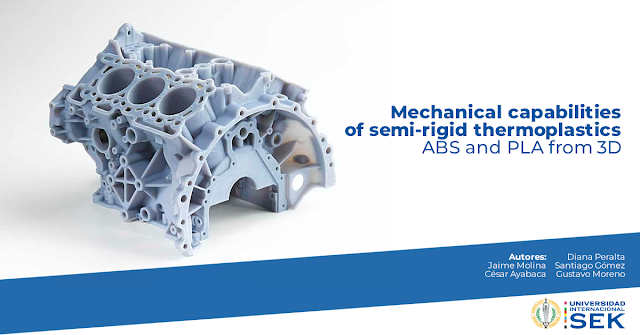Mechanical capabilities of semi-rigid thermoplastics ABS and PLA from 3D printing
In the last years the 3D printings has incremented in several industrial sectors like the textile, aeronautics, automotive, medical among others. Given its versatility in the manufacture process of elements or components presenting geometric complexity, with relative low production costs also saving time in the implementation. The present study shows the characterization of two semi-rigid thermoplastic types: the Acrylonitrile-Butadiene-Styrene (ABS) and the Polylactic Acid (PLA).
Acquired through additive manufacturing process using the FDM method (Fused Deposition Modelling). The semi-rigid specimens were built internally with five different and specific geometric grids; such as triangular, square, pentagonal and circular meshes that were underwent to traction and flection essays. The validation methodology used during the test essays were based in the norms ASTM D638-14 and ASTM D790-10. The test results during the traction and flection essays shows that the best mesh for the PLA material was the circular concentric distribution with results as 7.964 MPa/g and 12.234 MPa/g respectively. While for the ABS material, the best results were for the square distribution with 8.82 MPa/g and 8.994 MPa/g respectively.
The difference between the tensile strength of the PLA obtained by the compression molding method vs the 3D printing by fused deposition moldeling, was only of 1.7%. Nonetheless, in terms of cost, 3D printing proves to be more cost-effective.
Reducing the printed material mass, production costs can be reduced: for the PLA material, 9.69%, for the ABS material, 7.6%. Considering the market values for the material: 750 g of PLA cost 35 euros, and 1 Kg of ABS cost 59 euros, applying this concept of 3D printing to the serial production of some product would achieve significant money savings. Also, is necessary to remember the final price of the product will depend of other variables as quality and printing time.
- Jaime Molina
- César Ayabaca
- Diana Peralta
- Santiago Gómez
- Gustavo Moreno
Read research here.

Comentarios
Publicar un comentario